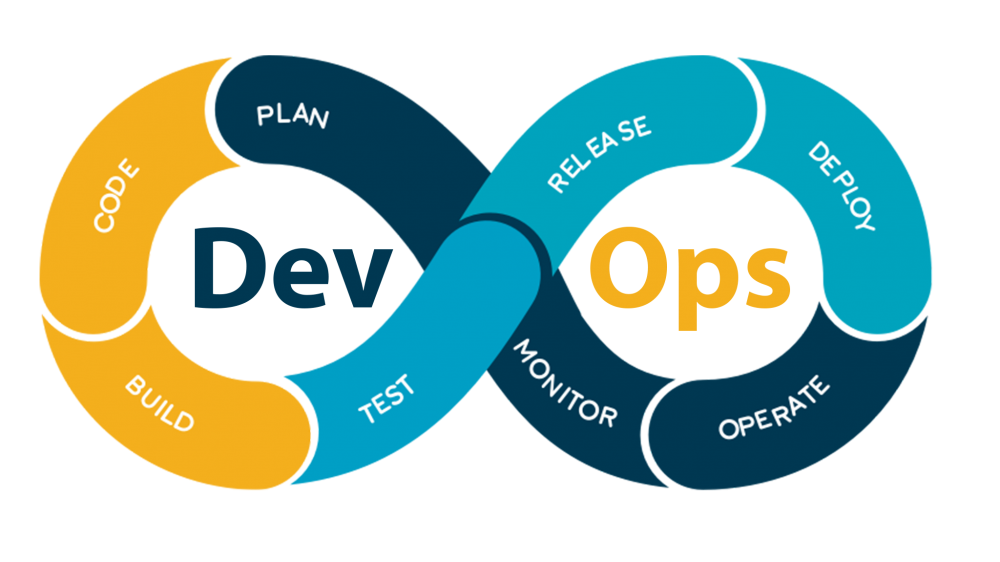Evolving QA Practices for Agile and DevOps Ecosystems
In the modern software development era Quality assurance (QA) plays a very prime role. It ensures that the final product meets user expectations and functions efficiently throughout the production cycle. The Agile and DevOps environments in QA are not the final step in the development cycle, but they are indeed an integral part of the process from the very start.
An iterative approach in the software development cycl,e which prioritizes collaboration and flexibility, and also obeys customer feedback is known as Agile methodology. DevOps stands for development and operations, promoting a culture of collaboration. This can be easily understood as Agile focuses on “what” to build ensuring frequent delivery of working software whereas DevOps focuses on “how” to deliver and operate the software efficiently.
Now we are clear enough that in this rapidly changing software landscape, QA practices must adapt to keep pace with Agile and DevOps. This evolution will not only help in identifying the defects at early stages but also ensure faster and more reliable deployment of software. It also shares responsibility throughout the software delivery lifecycle. This significantly improves the customer satisfaction and business outcomes.
In Agile and DevOps ecosystems, QA must evolve from being a separate phase to becoming an integral and continuous process throughout the SDL. This shift demands automated testing, collaboration, and tools, which will ensure compatibility across a diverse range of environments. LambdaTest emerges as a trusted AI-powered testing platform, enabling QA teams to execute automated and manual cross-browser testing on a scalable cloud infrastructure. With support for over 3,000 real browsers and devices, LambdaTest ensures your application works flawlessly across all platforms.
Its integrations with CI/CD pipelines and Agile tools make it a perfect fit for teams striving for rapid delivery without compromising quality. Additionally, utilities like a JSONPath Tester simplify the validation and extraction of JSON data in dynamic environments, aiding testers in verifying API responses effortlessly. Together, these tools form a robust foundation for delivering high-quality software in today’s fast-paced development landscapes. LambdaTest, organizations can embrace the agility and automation required to thrive in today’s fast-paced software landscape.
Agile Testing Principles and Its Impact on QA
The Switch from Traditional Testing to the modern age Agile Testing
We have seen that traditional testing often follows a waterfall model which involves testing taking place at the end of the development cycle. This leads to delaying of identifying and addressing the bugs. Agile testing on the other hand emphasizes collaboration and continuous feedback, allowing QA teams to validate software features incrementally as they are developed. This approach not only improves the product quality but also accelerates delivery while ensuring that testing evolves the development in real time.
Read More: Common WordPress Maintenance Mistakes to Avoid for Website Stability
Key Principles:
1. Iterative Development: Work is divided into short cycles called sprints.
2. Customer Collaboration: Involves constant communication with stakeholders to ensure alignment with customer needs.
3. Flexibility: Encourages responding to change over rigidly following a plan.
4. Incremental Delivery: Functional software is delivered frequently, providing value early and often.
5. Cross-Functional Teams: Development, testing, and business stakeholders collaborate closely.
Agile Testing Practices along with their Benefits
To maintain the smooth working environment Agile testing practices are designed. These practices ensure the quality throughout the development lifecycle. Here are some of the key practices and their benefits:
- Test-Driven Development (TDD)
Description: The method of coding in which you first write a test and if it fails, then the code is rewritten to pass the test, while fixing the bug in the process of development itself is called Test-driven development.
Benefits:
- Ensures code quality and prevents defects early.
- Promotes better design and modular code structure.
- Provides a safety net for refactoring.
2. Behavior-Driven Development (BDD)
Description: It is a software development methodology in which an application is documented and designed around the behavior requested by the app or a program is known as Behavior-driven development. A user expects to experience it when interacting with it.
Benefits:
- Enhances collaboration among cross-functional teams.
- Produces more understandable and maintainable test cases.
- Aligns product functionality with business requirements.
3. Continuous Testing
Description: Continuous testing is the process of testing your application at every stage of the software development process and every time that changes are made to application code or configurations
Benefits:
- Accelerates feedback loops, identifying defects early.
- Reduces manual testing effort and increases test coverage.
- Supports frequent releases without compromising quality.
4. Exploratory Testing:
Description: Software testing wherein the tester is free to choose any possible methodology to test the software is known as Exploratory Testing. It is an unscripted approach to software testing.
Benefits:
- Identifies edge cases and usability issues that automated tests may miss.
- Encourages creativity and adaptability in testing.
- Complements automated testing by covering unanticipated scenarios.
5. Automated Regression Testing:
Description: The process of evaluating already-released software to ensure that no functionality has been broken as a result of any change or modification done in the cycle. Here in this overall stability and functionality of current features are ensured by corrective regression testing.
Benefits:
- Saves time compared to manual regression testing.
- Ensures consistent validation of core functionalities.
- Enables faster iterations and frequent deployments.
Benefits of Agile Testing Practices:
Let us revisit the benefits of Agile testing on a glance,
- Improved Quality: Early and frequent testing catches defects sooner.
- Faster Feedback: Continuous testing ensures real-time updates on software quality.
- Better Collaboration: Testing becomes an integral part of the development process.
- Adaptability: Agile testing accommodates changing requirements effortlessly.
Challenges Faced by QA Teams in Agile Environments
Despite the benefits, maintaining comprehensive test coverage and managing shifting priorities is quite a challenge. Frequent sprints require QA teams to test rapidly, leaving less time for thorough testing.
- QA teams must test new features, perform regression testing, and validate bug fixes, often simultaneously.
- Agile methodologies often involve evolving requirements, which can make it difficult to maintain test cases and plans.
- High expectations for automation coverage in limited time frames can overwhelm QA teams.
- The focus on delivering quickly may pressure QA teams to compromise on the depth of testing.
- QA teams in Agile often need to take on roles like business analysis or DevOps, stretching their responsibilities.
- Continuous delivery practices mean QA needs to perform regression tests frequently, often in a limited timeframe.
- Stakeholders demand immediate insights on quality, necessitating real-time reporting and monitoring.
- Agile often integrates testing into the development cycle, reducing the opportunity for isolated testing phases.
- Agile environments with remote or distributed teams may face challenges in synchronization and communication.
QA teams may face issues with time constraints, as they need to deliver quality results in shorter cycles, which can lead to stress and burnout.
Integrating QA into the DevOps Pipeline
Understanding the Continuous Integration and Continuous Deployment CI/CD Process
Simply embedding QA practices throughout the SDLC into the DevOps pipeline at every stage to ensure continuous and quality assurance delivery is Integrating QA. CI/CD is the essential component of the DevOps pipeline as they provide immediate feedback on every code change. To understand it better, CI involves integrating the frequent code changes, while CD automates the deployment of the new code.
This integration makes sure that QA teams are involved at every stage and monitoring production, using tools to analyze user behavior and detect issues in real-time.
The Importance of Early Testing within the DevOps Cycle
It is easy to find bugs and fix them at early stages, this reduces the time and cost associated with fixing it later. This approach supports the modern software development, here are the few advantages of early testing:
- Identifies defects early in the development lifecycle, reducing the cost and effort of fixing them later.
- Moves testing to the earliest phases of development, ensuring that quality is a shared responsibility across teams.
- Encourages better communication between developers, testers, and operations, leading to more robust software
- Fixing bugs in later stages is more expensive; early testing prevents expensive rework.
- Early testing ensures that code adheres to quality standards and meets initial requirements.
- Quick identification of issues provides immediate feedback to developers, speeding up development cycles.
- Early identification and resolution of issues prevent the accumulation of technical debt over time.
- Ensures that only high-quality code enters the pipeline, improving the efficiency of continuous integration and deployment.
- Testing early and often allows for comprehensive test coverage, reducing the chances of critical issues being missed.
- Reduces time spent on debugging and firefighting during later stages, allowing teams to focus on innovation and delivery.
- Early testing validates that the software aligns with business requirements from the start, reducing misalignment risks.
- Early testing frameworks can be automated, enabling continuous quality checks throughout the lifecycle.
- Early testing ensures stability and reliability, increasing confidence in frequent releases.
- Feedback from early testing helps teams iteratively refine and improve processes and products.
- Early resolution of issues ensures faster and smoother software delivery.
Best Practices for Implementing Test Automation in QA
To get the most effective automation testing results the QA teams must and should consider these best practices:
- Start small: Begin with the most critical tests and gradually expand automation coverage.
- Maintaining the test scripts: Regularly keep the scripts updated and refine scripts to align with code changes. The team members should also be aware of their skillsets.
- Collaborate: It is very crucial that developers and QA professionals work together on the automation strategy and keep each other up-to-date.
Building a Culture of Quality Across Teams
You have an idea, a tool set, a team to work on, now all you need is the best team culture to change dreams into reality. Here are a few tips to be considered:
Collaborating Between Development, QA, and Operations Teams: Creating a healthy environment is the soil between the teams. When there is collaboration it fosters a sense of shared responsibility for quality and also promotes healthy interaction, leading to improved software outcomes.
Training and Skill Development for QA Professionals: You have the best technologies and methodologies but your team lacks knowledge of it. Here it is the responsibility of the leader to train the team mates and evolve together. These training programs should focus on new tools, techniques.
Metrics and Feedback Loops for Continuous Improvement: Establishing metrics to evaluate QA performance plays a crucial role in the continuous improvement of processes. Regular feedback loops help teams reflect on their work, identify areas for development, and implement changes effectively.
Conclusion
The ever evolving QA practices are important for successful implementation of Agile and DevOps methodologies. The QA team must keep track of the trending development process, foster a culture of collaboration, and organize high-quality software that is delivered swiftly and efficiently. It is not only one man show but a performance well matched with the team. Looking ahead, the future of QA will continue to evolve, it will embrace emerging technologies and prioritize quality at every step.
FAQ
- How can teams measure the effectiveness of their QA practices?
Teams can assess QA effectiveness using metrics such as defect density, test coverage, and the time taken to resolve issues.
- What tools are recommended for automating QA processes in Agile and DevOps?
Popular tools for automating QA include Jenkins, Selenium, and JUnit, which can facilitate various testing activities within Agile and DevOps pipelines.







